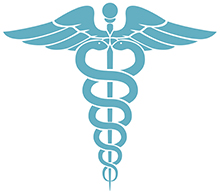After Ebola
Finance & Development, June 2016, Vol. 53, No. 2

African countries have made some progress in improving health systems, but holes remain
Nearly two years after the peak of the Ebola outbreak, affected countries in Africa have made some progress in improving their health systems, and a continent-wide agency designed to prevent, detect, and fight disease outbreaks has been established.
But whether donor funds pledged to combat Ebola have materialized and—if so—how they have been spent is unclear. The affected countries in west Africa will have to keep the pressure on donors to deliver on promises and make a concerted effort to document and evaluate the impact of health systems spending.
The lack of spending accountability and of concrete results in the public domain raise persistent questions regarding the international community’s ability to respond effectively to large-scale outbreaks.
Progress on health systems
Recent Ebola flare-ups in west Africa were quickly identified, and contacts were traced and safely contained. The response to these latest flare-ups demonstrates increased capacity of the region’s health systems. Recent investments in rapid response teams, surveillance, lab diagnostics, risk communication, infection prevention and control measures, and other programs seem to be paying off.
Other routine health system functions are also improving. In Sierra Leone, for example, a mid-2015 measles and polio vaccination campaign reached almost all children under the age of five who had missed out during the Ebola outbreak.
Another bright spot is the creation in 2015 of the African Centres for Disease Control and Prevention (African CDC) with $6.9 million in funding from the African Union Commission and technical support from the U.S. Centers for Disease Control. The African CDC is set to coordinate research throughout Africa on the biggest public health threats, gathering data and reinforcing countries’ capacity to prevent and respond to outbreaks. However, initial funding and staffing is minimal, and leadership has not yet been named.
Still, huge risks remain. At the peak of the outbreak, surveys conducted in Guinea, Liberia, and Sierra Leone found that the number of people seeking health care had dropped by half. Analysts estimate that this forgone care likely resulted in increased mortality from other prevalent infectious diseases, such as malaria, tuberculosis, and HIV/AIDS (Parpia and others, 2016). The cure rate for tuberculosis in Liberia has dropped from 55 percent before the Ebola outbreak to about 28 percent. Many also worry that the disease-specific approach taken by external funders hinders rather than helps the attempt to rebuild the health system as a whole.
Donor delivery
Overall donations to the Ebola response were robust: the United Nations Office for the Coordination of Humanitarian Affairs (OCHA), which collects data on humanitarian contributions, estimates that $3.62 billion was pledged during 2014–15. The U.S. government also authorized an emergency appropriation of $5.4 billion, the most funding the U.S. Congress has ever provided for an international health emergency.
Of the OCHA-tracked funding, about one-third had been disbursed to affected countries by February 2015; there have been no updates since. A November 2014 White House fact sheet says that the goal of the U.S. funding was to “fortify domestic public health systems, contain and mitigate the epidemic in West Africa, speed the procurement and testing of vaccines and therapeutics … enhancing capacity for vulnerable countries to prevent disease outbreaks, detect them early, and swiftly respond … ” As of December 2015, U.S. agencies that received Ebola funding had obligated 47 percent of the total approved and disbursed 23 percent. But there is little public information on how the roughly $1.2 billion disbursed was used, although review plans are underway by the relevant U.S. agencies’ inspectors general.
Despite a nearly unprecedented global effort to coordinate a response to the Ebola outbreak, west African governments do not yet know the amount, timing, and conditions of most of the aid—nor how much will be given to governments to distribute and whether governments will have a say in its use.
The lack of documentation and accountability for the uses and outcome of the spending does not bode well for the future—a particularly sore point from the perspective of the United States. The Obama administration’s recent tussle with Congress over an emergency appropriation request to combat the Zika virus reflects such concerns. ■
Amanda Glassman is Director of Global Health Policy and Vice President for Programs at the Center for Global Development.
Reference
Parpia Alyssa S., Martial L. Ndeffo-Mbah, Natasha S. Wenzel, and Alison P. Galvani, 2016, “Effects of Response to 2014–2015 Ebola Outbreak on Deaths from Malaria, HIV/AIDS, and Tuberculosis,” Emerging Infectious Diseases, Vol. 22, No. 3.
Opinions expressed in articles and other materials are those of the authors; they do not necessarily reflect IMF policy.


